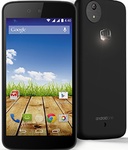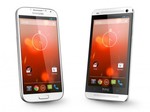Android features Apple copied for iOS 14 - Android
Apple has just announced iOS 14, the next software update for the iPhone. As you probably know by now, iOS 14 is the biggest update to the iPhone to date. The differences are more noticeable than what the iOS 13 is to the iOS 12, and the versions before it. You might notice that some […] More
This article, Android features Apple copied for iOS 14, was originally published at NoypiGeeks | Philippines Technology News, Reviews and How to's.
Apple has just announced iOS 14, the next software update for the iPhone.
As you probably know by now, iOS 14 is the biggest update to the iPhone to date. The differences are more noticeable than what the iOS 13 is to the iOS 12, and the versions before it.
You might notice that some of these features are familiar. That’s because a few of iOS 14’s “new” UI and UX changes are already present on Android devices for years.
 iPhone 11 Pro
iPhone 11 ProSo today, we’re checking out the new iOS 14 features that were seemingly copied from Android. Just in case you’re an Android user who wants to jump ship to iOS, or if you’re just simply curious.
Home Screen Widgets

iOS’ Home Screen is one of the most staple features of the iPhone. It greets you every time you unlock the device, all your apps are laid on it, and it’s the screen that’s on-display in almost all iPhone marketing materials.
With iOS 14, this major component is getting a major facelift. From being static and boring, users can now add app widgets that show previews and relevant information.
Widgets have been present on Android phones for years and have been one of its distinct features over iOS. In fact, in the last few years, we’ve seen fewer Android smartphones with widgets pre-enabled out of the box.
App Library

Android’s App Drawer is a separate screen that lists all your apps. But in recent years, most Android OEMs have disabled it out of the box and laid out all the apps in the home screen to mimic iOS’ style.
But now, Apple have introduced the App Library on iOS 14. It’s a separate screen for all your apps. But unlike Android’s, it looks more organized.
Picture-in-Picture

iPhones are some of the most powerful smartphones in the market. However, their full potential is limited by the inflexible software.
But with iOS 14, Apple is starting to shake things up. With the Picture-in-Picture mode (PiP), you can finally have a video playing on top of the app you’re using. Say, you’re watching a movie and reading an article, you can reply to a message without disruption. It will further flex the iPhones’ powerful processors and will finally keep up with Android, which already has this feature for more than two years.
Use third-party email and browser as default

Apple users have enjoyed the seamless integration of all its products. However, the seclusion can be an inconvenience at times.
Thankfully, Apple is starting to loosen up on iOS 14. Now, you can use third-party apps as the default email and browser. Instead of automatically launching Apple’s Mail and Safari apps, you can opt to use, say, Gmail and Google Chrome when tapping a link from your Messages, Twitter, and what not. This is something that Android users are free to do since then.
Compact Calls

Why does an incoming call have to take-up the entire screen? We have no idea. But what we know is that it’s distracting, especially when you’re doing something important on your phone.
Fortunately, with iOS 14, voice, FaceTime, and third-party call notifications are now more compact and will only have a small pop-up on the top of the screen. You can tap the answer, reject, or completely disregard the call and continue what you’re doing.
Compact Digital Assistant

iOS 14 is getting less annoying. Other than compact calls, summoning Siri, Apple’s voice assistant, will not take up the entire screen ever again. Reading a food recipe? You can ask Siri to create a grocery list as you continue to read.
Related stories
- List of compatible devices for iOS 14
- Best new features of iOS 14
App Clips

Android introduced App Slices back in 2018 that will let users use a specific part of an app without having to install the whole thing. Albeit, this feature is yet to hit mainstream.
With their strong influence in the app development industry, more developers will hopefully go on board so Apple can finally make a break for it with App Clips.
Cycling on Apple Maps

Google Maps have always been the gold standard in web mapping service, and Apple Maps have been having a hard time keeping up. But in the last seven years, Apple have provided new updates to go against Google’s.
With iOS 14, Apple Maps is finally getting cycling direction. Although it’s only limited in New York City, Los Angeles, San Francisco Bay Area, Shanghai, and Beijing.
Translate

Google Translate is one of the biggest products of the company and is supported on Android smartphones.
Apple has also made their own Translate app for the iOS 14. There’s the conversation mode that translates spoken word, and on-device mode that works without internet. The only problem is, it only support 11 major languages.
Password Monitoring

Google Chrome’s password alert feature, which will notify you when the password you’re using have been part of a data breach, is also making its way to Safari with iOS 14.
Well, that’s it. What iOS 14 features made you excited about? Are the new similarities to Android enough to make you switch? Let us know in the comments.
This article, Android features Apple copied for iOS 14, was originally published at NoypiGeeks | Philippines Technology News, Reviews and How to's.
02/07/2020 08:14 AM
Realme Watch to launch in PH on July 9
02/07/2020 04:25 AM
NLEX opens Tambobong Interchange
02/07/2020 08:33 AM
App developer accuses Apple of forcing auto-renewable subscriptions
02/07/2020 12:41 PM
NTT Ltd. Philippines announces Ireen Catane as new CEO
02/07/2020 03:38 PM
SEAOIL protects frontliner staff with personal protective kits
02/07/2020 06:36 AM
Realme Watch to be released in the Philippines
02/07/2020 02:38 AM
- HEALTH
- Comics
- Libraries & Demo
- Sports Games
- Racing
- Photography
- Transportation
- Media & Video
- Sports
- Health & Fitness
- Weather
- Medical
- Cards & Casino
- Arcade & Action
- Personalization
- Social
- Communication
- Productivity
- Casual
- Shopping
- Tools
- Brain & Puzzle
- Business
- News & Magazines
- Finance
- Lifestyle
- Music & Audio
- Entertainment
- Travel & Local
- Books & Reference
- Education





